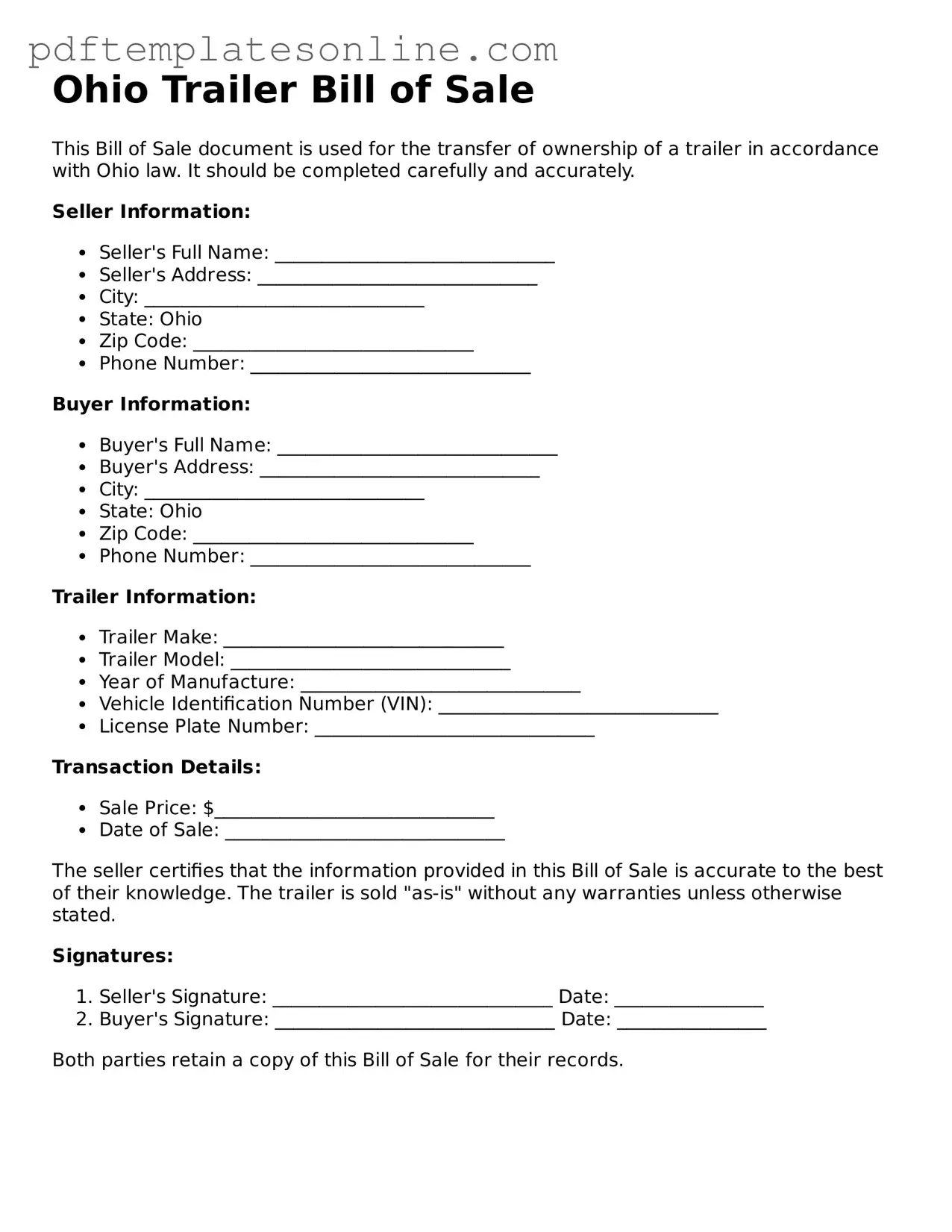When filling out the Ohio Trailer Bill of Sale form, individuals often overlook key details that can lead to complications later on. One common mistake is failing to provide accurate information about the trailer itself. This includes the Vehicle Identification Number (VIN), make, model, and year. Inaccuracies can create confusion and may result in issues during registration.
Another frequent error involves neglecting to include the purchase price. This detail is essential not only for record-keeping but also for tax purposes. Without a clear purchase price, both the buyer and seller may face challenges when it comes to transferring ownership or dealing with tax assessments.
Many people also forget to sign the document. Both the buyer and seller must provide their signatures to validate the transaction. Without these signatures, the bill of sale is incomplete and may not be recognized by the state when it comes time to register the trailer.
In addition, individuals sometimes use outdated or incorrect forms. It is crucial to ensure that the most current version of the Ohio Trailer Bill of Sale is being used. Using an obsolete form can lead to unnecessary delays and complications in the registration process.
Another mistake is not providing contact information. Including phone numbers and addresses for both parties is vital. This information facilitates communication in case any issues arise after the sale.
Some people fail to include a date on the bill of sale. This date is important for establishing when the transaction occurred. Without it, there could be confusion about ownership and rights associated with the trailer.
Additionally, individuals sometimes leave out important terms of the sale. If there are specific conditions or agreements between the buyer and seller, documenting them in the bill of sale can prevent misunderstandings later on.
Another common oversight is not keeping a copy of the completed bill of sale. Both parties should retain a copy for their records. This document serves as proof of the transaction and can be helpful if any disputes arise.
People may also neglect to check for spelling errors or typos. Mistakes in names or addresses can create significant issues, particularly when it comes to registration. Taking a moment to review the document can save time and hassle in the long run.
Finally, some individuals underestimate the importance of consulting with a professional. Seeking advice from a knowledgeable individual can provide clarity and ensure that all necessary details are correctly filled out. This proactive approach can help avoid potential pitfalls and make the process smoother for everyone involved.
